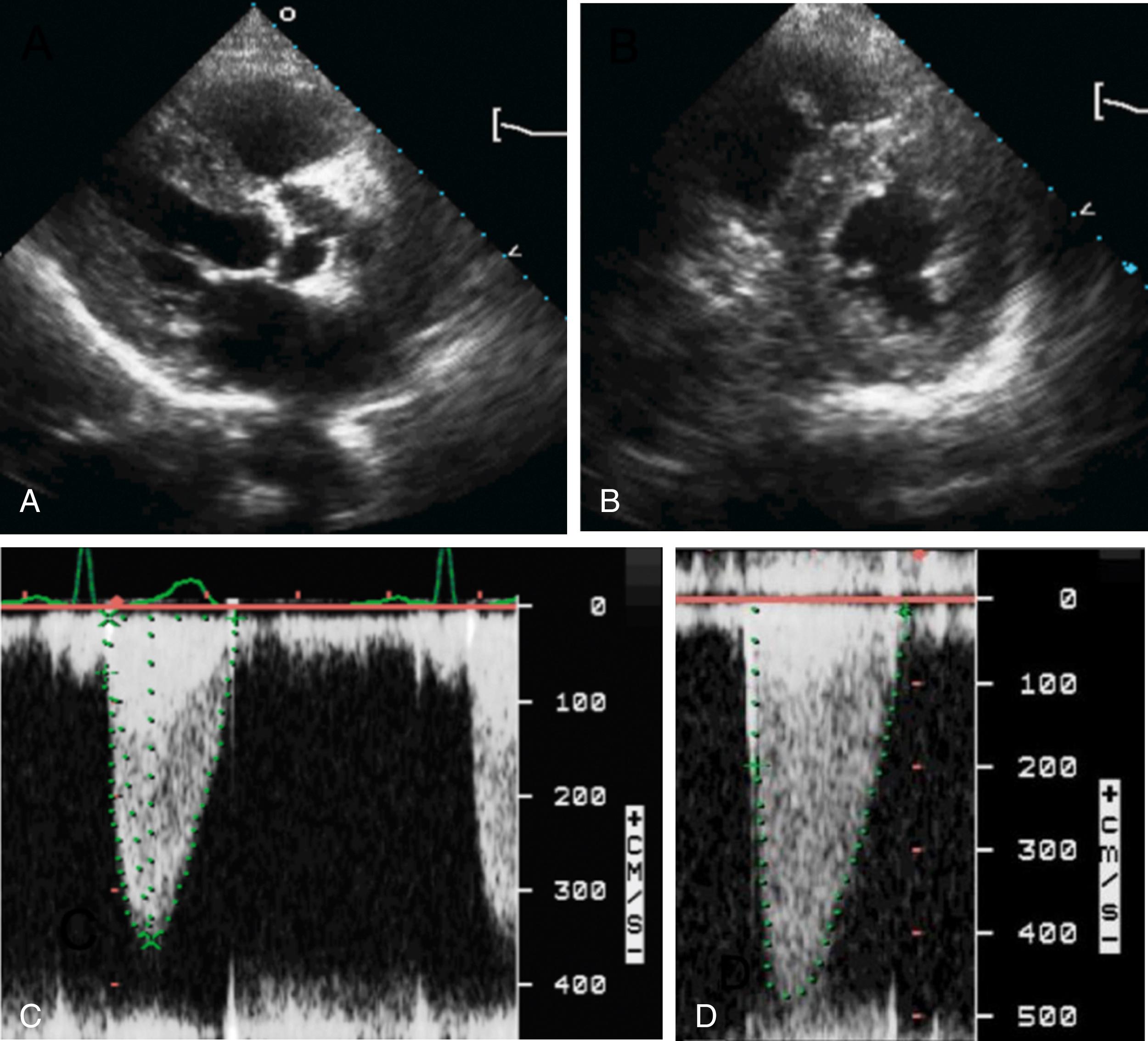Physical Address
304 North Cardinal St.
Dorchester Center, MA 02124
Low-flow, low-gradient (LF-LG) aortic stenosis (AS) is characterized by a small aortic valve area (AVA<1.0 cm 2 ), a low gradient (mean <40 mm Hg), and a low-flow state (stroke volume index [SVI] <35 mL/m 2 ). The LF-LG AS pattern may occur in the context of either a reduced (i.e., “classical” low-flow; see Chapter 82 ) or preserved (i.e., “paradoxical” low-flow) left ventricular ejection fraction (LVEF). Besides classical and paradoxical LF-LG AS, there is another entity called normal-flow, low-gradient AS that is characterized by a small AVA and low gradient but with a normal SVI and a preserved LVEF ( Fig. 83.1 ). In these patients with normal-flow, low-gradient AS, the SVI is normal, but the mean flow rate (stroke volume [SV]/left ventricular [LV] ejection time) is generally low (<200 mL/s). The purpose of this chapter is to provide an update on the Doppler echocardiographic assessment of paradoxical LF-LG AS.
Paradoxical LF-LG AS is defined as a small AVA (i.e., AVA<1.0 cm 2 and indexed AVA<0.6 cm 2 /m 2 ), a low gradient (i.e., <40 mm Hg), a low flow (i.e., SVI <35 mL/m 2 ), and a preserved LVEF (i.e., ≥50%). The reported prevalence of this entity includes 5% to 25% of AS patients and has been shown to increase with age, female gender, and concomitant presence of systemic arterial hypertension, metabolic syndrome, or diabetes. The cumulative effect of one or more of these factors contributes to more pronounced or exaggerated LV concentric remodeling, the development of myocardial fibrosis, and, as a result, reduction in the size, compliance, and filling of the LV cavity (see Fig. 83.1 ). , , Moreover, LV systolic function, which is apparently normal when only observing the LVEF, is, in fact, substantially reduced when considering global LV longitudinal strain. Longitudinal strain has been shown to be more sensitive to detect subclinical alterations of intrinsic myocardial systolic function. , Hence, decreased SV in paradoxical LF-LG AS is predominantly caused by impaired LV filling but also in part by abnormal LV emptying. Table 83.1 summarizes the main clinical and Doppler echocardiographic features of paradoxical LF-LG AS, and Fig. 83.2 and , , ![]() present an example of a patient with this entity. It is also important to emphasize that several other factors, besides the restrictive LV physiology, may also contribute to the reduction of LV forward SV in patients with AS and preserved LVEF, including reduced arterial compliance, atrial fibrillation, concomitant mitral regurgitation, mitral stenosis, or tricuspid regurgitation. ,
present an example of a patient with this entity. It is also important to emphasize that several other factors, besides the restrictive LV physiology, may also contribute to the reduction of LV forward SV in patients with AS and preserved LVEF, including reduced arterial compliance, atrial fibrillation, concomitant mitral regurgitation, mitral stenosis, or tricuspid regurgitation. ,
| Clinical Characteristics |
| Older age Predominantly women |
| Frequent comorbidities: systemic hypertension, metabolic syndrome, diabetes Atrial fibrillation |
| Doppler Echocardiographic Features |
| Aortic Valve |
| Severely thickened and calcified valve with reduced opening |
| AVA <1.0 cm 2 , AVAi <0.6 cm 2 / m 2 , DVI <0.25 |
| Mean transvalvular gradient <40 mm Hg |
| Valvuloarterial impedance >4.5 mm Hg.mL –1 .m 2 |
| Left Ventricle |
| Ejection fraction ≥50% |
Small cavity size:
|
| Relative wall thickness ratio >0.5 |
| Impaired LV filling |
| Impaired GLS: <15% a |
| SVI <35 mL/m 2 Transvalvular flow rate <200 mL/s a |
| Other Valves |
| Mitral regurgitation or stenosis |
| Tricuspid regurgitation |
a Values based on initial retrospective studies , , , and are given as an indication. Further investigations are needed to determine more precise cut points.

Video 83.2. Patient with paradoxical low-flow, low-gradient aortic stenosis (AS). A–C, This 78-year-old woman has a history of calcific AS and is in New York Heart Association functional class III. The parasternal long- and short-axis views show a small left ventricular cavity with pronounced concentric remodeling and preserved left ventricular ejection fraction and a calcified and thickened aortic valve with restricted opening.
The presence of a low-flow state in the context of preserved LVEF complicates the assessment of stenosis severity and therapeutic decision making. Patients with paradoxical LF-LG severe AS have a 40% to 50% lower referral to surgery compared with patients with the expected normal-flow, high-gradient pattern of AS, likely because of underestimation of stenosis severity consequently to the relatively low gradient. , Yet several studies have demonstrated that these patients have worse prognosis compared with those with normal-flow, high-gradient AS and have much better prognosis when treated surgically than medically. , , , ,
Become a Clinical Tree membership for Full access and enjoy Unlimited articles
If you are a member. Log in here